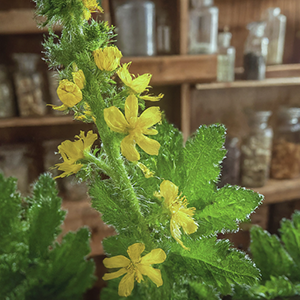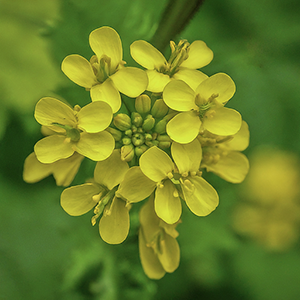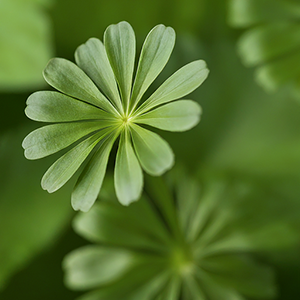Ear nose and throat remedies: The ears, nose, and throat comprise an anatomic and physiological unit because all these organs are interconnected. The mucous layer that covers their interior spreads to each part with no transitional joint. Each ear communicates with the pharynx through the Eustachian tube’s exemplary duct.

Under the term throat, we include both the pharynx, the tonsils, and the larynx, in whose interior the voice is produced. Paranasal sinuses form a functional unit with the nostrils. These sinuses are cavities in the facial bones; their inflammation is called sinusitis.
The tonsils and paranasal sinuses are especially susceptible to toxic germs. These germs stay in the sinuses to become infections, from which toxins flow into the blood and other organs. A permanent infectious colony often causes chronic or repetitive bronchitis in the paranasal sinuses or the tonsils.
Ear nose and throat remedies in the form of medicinal herbs, either locally applied in gargles, nose irrigations, or inhalations, or taken orally, provide a soothing, anti-inflammatory, and antibiotic action and promote the expulsion of the mucous, which contributes decisively to the healing, and, generally, to the prevention of ailments of this important anatomic region.
Natural Ear Nose and Throat Remedies
Ear Nose and Throat Conditions
Tonsillitis and Pharyngitis: Tonsillitis, or sore throat, is the inflammation of the tonsils, usually caused by an infection, either bacterial or viral. When this inflammation extends to the entire pharyngeal mucus membrane (throat) and not only to the tonsils, it is called pharyngitis.
The phytotherapeutic treatment of both conditions is based on local applications, mainly gargles, with the plants mentioned. Gargles can also be done with any of the herbs above. Repetitive pharyngeal infections in children demand the administration of defense-stimulating action, such as thyme, nasturtium, and echinacea.

Throat, Irritation: This may be due to several causes, among them infections (chronic pharyngitis), irritation (tobacco smoke, inhalation of chemical substances), inhalation of chemical substances), atrophic (weakness of the mucous cells that cover the throat), and even tumors. It appears through an itching and painful throat, dry cough, swallowing difficulty, and mucus.
All these herbs have bechic action; that is to say, they ease coughs caused by itching or throat irritation. They are employed both internally and locally in gargles.
Laryngitis is an inflammation of the mucous layer that covers the larynx, the organ where the voice is produced. It is accompanied by increased mucous production in the throat, coughing, aphonia or hoarseness, and, in severe cases, breathing difficulty due to spasms of the vocal cords, which close the air passages.

Sinusitis is the swelling of the paranasal sinuses, small cavities in the facial bones that connect with the nostrils through tiny holes. The interior of these cavities or sinuses is covered by a mucous layer, whose inflammation produces headaches and other discomforts and is slow to cure.
Besides nasal irrigations, compresses on the face are recommended, as inhalations of vapors or essences and the intake of herbs with antibiotic action, such as radish or nasturtium.
Aphonia is the loss of the voice. It is generally a consequence of inflammation or infection of the larynx or vocal cords (laryngitis), though it may also result from tumors, nervousness, and other reasons.

Hoarseness is the change in the tone of the voice, which becomes hoarse and emits less sound. It is usually caused by the same things that cause aphonia. These herbs employed internally or in local applications reduce the inflammation of the vocal cords and contribute to the elimination of mucus, which frequently causes aphonia or hoarseness.
Nose bleeding: This is a nasal hemorrhage. It is often caused by breaking a tiny vein in the nostril, though it may also be related to high blood pressure. Medicinal herbs with hemostatic or astringent action are applied in nose plugging, prepared with gauze, or in nasal irrigations. Combining this local treatment with the intake of herbal teas made with some plants with hemostatic or capillary protecting action is better.
Rhinitis is the swelling of the mucous membrane covering the nose’s interior. Antibiotics are used as astringents, and antiseptic herbs, such as nasturtium, are employed for nose irrigations and washings. Sneezing herbs, such as asarum, are also used.
Best Herbs for Gargling
When locally applied in gargles, all these plants produce one or several of the following actions: antiseptic (disinfectant), emollient (soothing), stimulating, and astringent (drying of the mucous membrane). Thus, they are recommended for infectious or inflammatory throat ailments like pharyngitis and tonsilitis.
Lemon juice is an excellent antiseptic. Applying to the tonsils with a cotton cloth can destroy several types of toxic germs in this part of the throat.
Madonna lily oil has soothing and antiseptic action. Applying drops into the ear canal produces good results in otitis or earaches.
The delicate flowers of the violet soothe the throat and ease coughing, either taken in infusion or syrup.
DISCLAIMER: All content on this website is presented solely for educational and informational objectives. Do not rely on the information provided as a replacement for advice, diagnosis, or treatment from a qualified medical expert. If you are pregnant, nursing, or have any preexisting medical concerns, talk to your doctor before using any herbal or natural medicines.
REFERENCES
- George D. Pamplona-Roger, M.D. “Encyclopedia of Medicinal Plants.” George D. Pamplona-Roger, M.D. Encyclopedia of Medicinal Plants. Ed. Francesc X. Gelabert. Vols. 1 San Fernando de Henares: Editorial Safeliz, 2000. 200, 201, 202, 203, 204. Print. [Ear nose and throat]
- Saline Nasal Irrigation:
- Rabago, D., & Zgierska, A. (2009). Saline nasal irrigation for upper respiratory conditions. American Family Physician, 80(10), 1117-1119.
- Essential Oils for ENT Conditions:
- Kligler, B., & Chaudhary, S. (2007). Peppermint oil. American Family Physician, 75(7), 1027-1030.
- Honey and Lemon for Sore Throats:
- Oduwole, O., Meremikwu, M. M., Oyo-Ita, A., & Udoh, E. E. (2014). Honey for acute cough in children. Cochrane Database of Systematic Reviews, (12).
- Garlic Oil for Earaches:
- Sarrell, E. M., Cohen, H. A., & Kahan, E. (2003). Naturopathic treatment for ear pain in children. Pediatrics, 111(5), e574-e579.
- Herbal Teas for Congestion:
- Srivastava, J. K., Shankar, E., & Gupta, S. (2010). Chamomile: A herbal medicine of the past with a bright future. Molecular medicine reports, 3(6), 895-901.
- Apple Cider Vinegar:
- Johnston, C. S., & Gaas, C. A. (2006). Vinegar: Medicinal uses and antiglycemic effect. Medscape General Medicine, 8(2), 61.
- Diet and ENT Health:
- Carr, A. C., & Maggini, S. (2017). Vitamin C and immune function. Nutrients, 9(11), 1211.
- General Safety of Natural Remedies:
- Tachjian, A., Maria, V., & Jahangir, A. (2010). Use of herbal products and potential interactions in patients with cardiovascular diseases. Journal of the American College of Cardiology, 55(6), 515-525.
